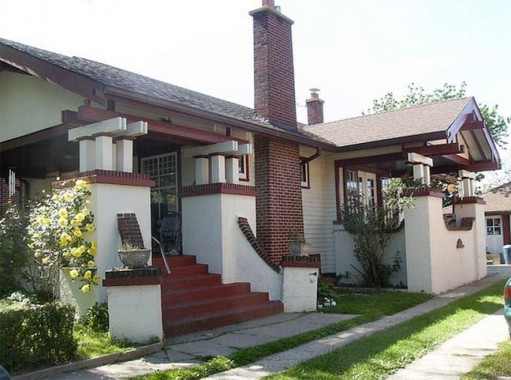95 Pell Place
West of City Island Avenue, north side of Pell Place
City Island Sears
Roebuck & Company
To the casual passer-by walking on Pell Place on City Island, the sight of number 95 is striking. It stands out as vastly different from the nineteenth century Greek Revival and Italianate architecture found in many other parts of this insular Bronx neighborhood. It certainly attracts attention from the mundane suburban early twentieth century cottages and single-family homes that abound nearby. It is also different from the sparse townhouses that have recently been erected. At first glance, observers may believe that they stumbled across a residence that was designed by the famed architect Frank Lloyd Wright, or at least designed by one who admired and tried to copy elements of Wright’s ideas.
95 Pell Place is a low-lying structure. It has a steeply pitched roof with horizontal projections called purlins. The siding is made of clapboard. The two stuccoed porches boast bracketed posts. The door and window openings are broad and horizontally aligned. The windows are multi-paned and the transom bars are low. The entire structure seems to have the air of Asian influence.
This residence, however, was designed neither by Frank Lloyd Wright nor by any of his admirers. This house came directly from a 1930 Sears, Roebuck catalog called Honor Bilt Modern Homes. It is a pre-fabricated bungalow called “The Osborne” by the company. The bungalow originated in India as a low house surrounded by a verandah. The style was imported into Britain by returning army officers and colonial officials who had been stationed there. The bungalow became popular in the United States in the early twentieth century, but the American version bore little resemblance to the Indian original. The one erected on City Island, however, does show the influence of the Asian origins of the style.
The owner of the property at 95 Pell Place paid $8,500 for the ready-cut pieces in 1930. Sears, Roebuck delivered the parts to the site, and the residence was assembled there. Today, it stands as an excellent example of the bungalow style and as a unique architectural structure on City Island.
Lloyd Ultan
